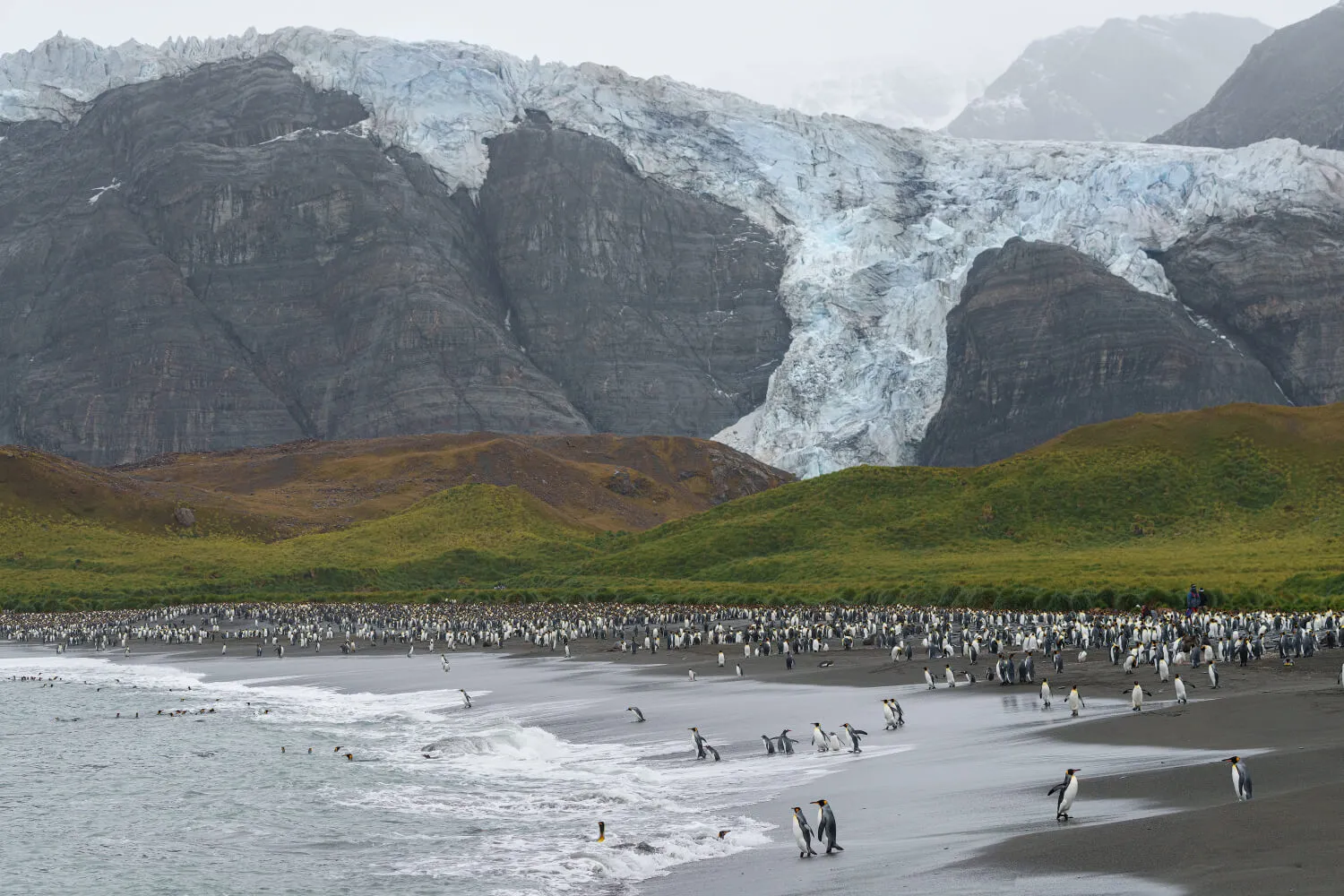

8 Ways You Can Responsibly Photograph Antarctica
Most travelers to Antarctica dream of photographing the continent’s cerulean-blue fjords full of bobbing icebergs, as well as the many species found in the region, from giant humpback and orca whales to waddling penguins and seals. As both a professional photographer and expedition guide for Antarctica21, Rodrigo Moraga does just that.Also a marine biologist who is dedicated to preserving both the continent’s pristine landscapes and protecting its species, Rodrigo is passionate about ensuring that all photography done on Antarctica21 expeditions is carried out in a sustainable, responsible way—and, most importantly, according to the International Association of Antarctica Tour Operators (IAATO) guidelines, of which Antarctica21 is a member.

During expeditions to the Last Continent, Moraga and his fellow guides show passengers the ropes on how to photograph the continent safely and effectively, which includes not disturbing wildlife on land or at sea while photographing them and always avoiding using any type of flash technology that tends to spook animals.Keep reading to learn more tips to ensure you capture amazing images and also maintain the integrity of Antarctica’s land and species while doing so.
Learn About the Animals You’re Photographing
What makes wildlife photography complicated is you can’t tell animals where to go and what to do. The decisions you make rely heavily on what your subjects are doing. If you don’t know how to read their behavior, you will end up missing a lot of good shots. The best way to increase your chances of capturing great images of them is by studying each species. Before you go out on an excursion, familiarize yourself with the animals you want to photograph. This also helps you notice each animal’s behavior and stay aware of any signs of distress, which would mean it's time to back away.

Be Silent & Keep a Low Profile
Animals scare easily, so unnecessary noise and movements can end up chasing them away. To avoid scaring them off when taking their photos, you must stay as silent as possible. The best method is to slowly approach them and take a moment to pause between every few steps. Then, when the animal knows you are there, it is important that you act calmly. Once you reach a safe distance—the IAATO’s guidelines recommend passengers to keep a distance of at least 16 feet (or 5 meters) from wildlife on shore so as to not disturb them—gently pick up your camera and press the shutter.

Apply Rules of Composition
Composition is one of the most important aspects that turns a good photo into great photography. For beginners, use the rule of thirds, and place your subject on one of the intersections to create balance in your photo. If you’re having difficulty imagining the lines, you can switch on the grids on your camera screen to help you compose.

Be Patient
Patience is important in nature photography—both landscape and wildlife—because you are likely not in control of the scene. Because of this, patience is one of the qualities a great photographer needs to have. Don't expect to get the perfect shot in half an hour. Sometimes you will need hours or even days to get the amazing image you’ve been searching for.

Look Out for Signs of Distress
Most of us don't want to cause distress to any animal or bird but we are at risk of doing so unknowingly. If you are photographing an animal that appears distressed, stop shooting and move away immediately. An excellent example would be seeing a penguin in its nest and wanting to get closer for a better photo. A great wildlife photographer knows that the safety of the animal you’re photographing comes first.
Use Common Sense
Good wildlife photography often relies on instinct. Generally, if you have to ask yourself whether a shot you want to take is ethical, it probably isn’t. This also includes being aware of things like giving each animal the right of way by not blocking their access routes between the sea and land. On a more practical level, take home everything you brought with you, including batteries, camera bags, and even any uneaten food you may have left from lunch. Don’t be tempted to leave the leftovers for the wildlife.

Watch Your Step
It’s always important it is to be aware of your surroundings for both your safety and the safety of the Antarctic wildlife whose path you may cross. No shot is worth injury to yourself or an animal. Trampling through any Antarctic landscape is a surefire way to leave more than just your footprints behind. It may not seem like much, but destroying or damaging an animal habitat—regardless of intent—is irresponsible.Don’t forget that depending on where you are, you could quickly be intruding on another creature’s home. That’s why we always adhere to the IAATOs wildlife viewing guidelines, which includes being mindful of walking through the tussock grass where species like penguins may be nesting, including in burrows under bare earth, to avoid encounters with any eggs.
Leave the Camera in the Bag
Last but not least, a great photographer always remembers to enjoy the moment. Sometimes it’s necessary to put your camera down and simply take in the incredible landscape —especially through your own eyes and not just a lens. Nature deserves to be observed and given your full attention by all your senses.

Related Articles
Experience the Extraordinary
From dramatic landscapes to close wildlife encounters, every journey to the White Continent is unique. Let's start planning yours together.













